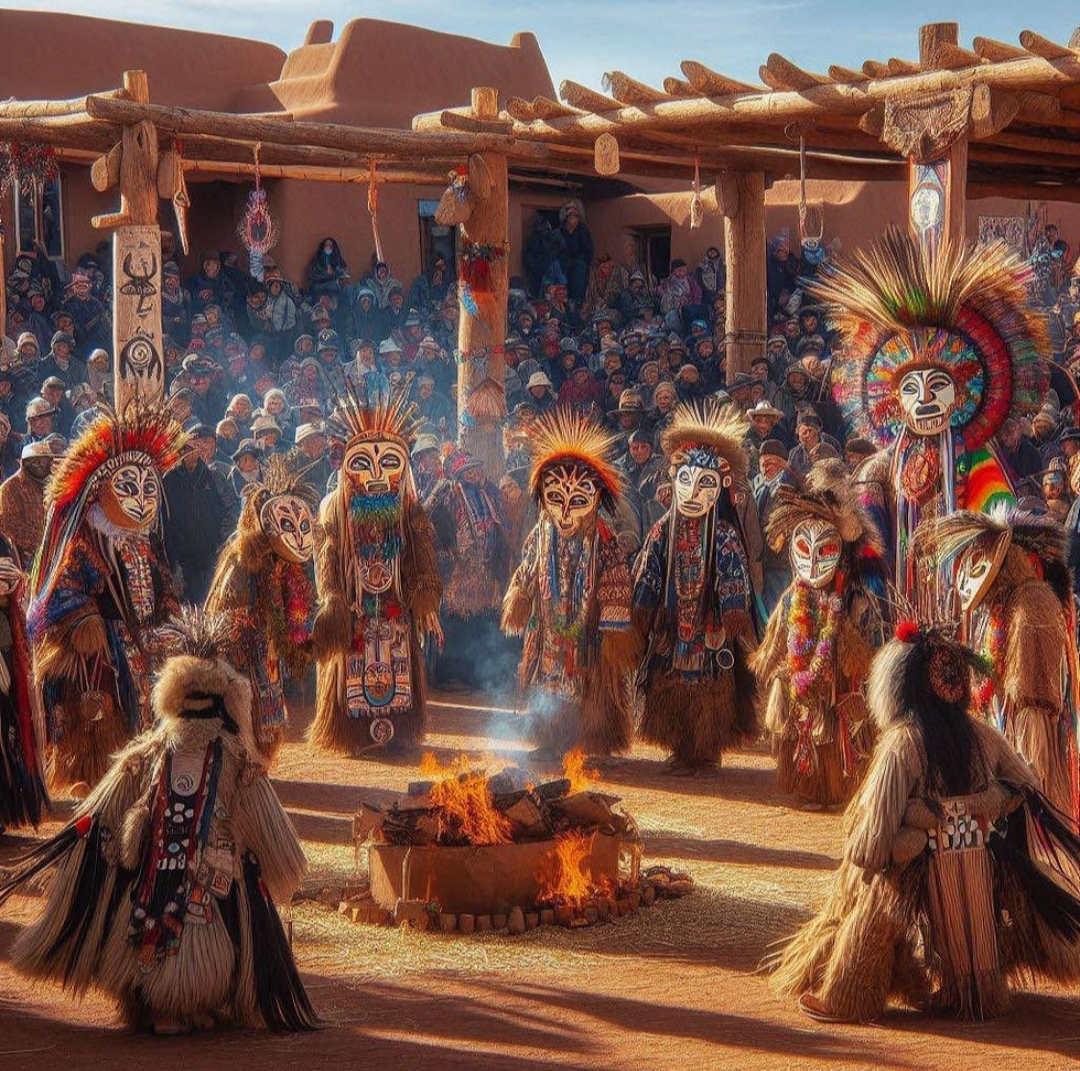The Hopi people, one of the oldest indigenous communities in North America, live primarily in northeastern Arizona. Their worldview is deeply shaped by a profound connection to nature and a spiritual understanding of the world. For the Hopi, every aspect of life—from agriculture to daily routines—is intertwined with spiritual beliefs and ceremonies, forming a holistic way of life.
Nature as a Living Being
For the Hopi, nature is not just a backdrop for human activity; it is a living, conscious entity. Mountains, rivers, plants, and animals are considered sacred and are treated with respect. This belief manifests in sustainable practices, such as:
- Agriculture in harmony with the environment – planting cycles follow seasonal and spiritual rhythms.
- Water conservation – desert life requires careful management of scarce water resources.
- Sacred plants – corn, beans, and squash are not merely food but carry symbolic and spiritual meaning.
The Hopi see themselves as part of a larger cosmic order, where humans have the responsibility to maintain balance and harmony with the natural world.
Spiritual Ceremonies and Rituals
Hopi spirituality is expressed through numerous rituals and ceremonies that align with nature’s cycles. Some key elements include:
- Kachina dances – these dances honor spiritual beings connected to weather, crops, and the well-being of the community.
- Seasonal ceremonies – rituals mark the change of seasons, planting, and harvest, reinforcing the link between humans and nature.
- Prayers and offerings – offerings are made to deities and spirits to maintain balance and ensure harmony.
These ceremonies are not merely symbolic; they guide agricultural practices, social organization, and personal behavior, keeping the community closely connected to the land.
The Role of Storytelling
Stories and myths play a crucial role in transmitting knowledge about nature and spiritual responsibilities. Hopi elders pass down lessons about respect for the earth, the cycles of life, and the importance of balance through oral tradition. These narratives teach values and maintain cultural identity across generations.
Harmony as a Way of Life
The integration of spirituality and nature creates a lifestyle where ecological awareness and cultural identity are inseparable. The Hopi do not see the spiritual and the natural world as separate; each action, from planting corn to participating in a dance, is imbued with meaning. This approach fosters:
- Environmental stewardship – sustainable use of land and resources.
- Community cohesion – shared rituals and responsibilities strengthen bonds.
- Spiritual well-being – everyday life is guided by principles of respect, gratitude, and balance.
Modern Significance
Despite modern challenges and external influences, the Hopi continue to honor these traditions. Their spiritual practices remain relevant not only for cultural preservation but also as a model of ecological and social balance. Learning from Hopi ways of life can offer insights into sustainable living, spiritual mindfulness, and respect for the interconnectedness of all beings.
Conclusion
The Hopi people demonstrate a profound integration of nature and spirituality. Their ceremonies, stories, and everyday practices show that humans are part of a larger, sacred system. Understanding their worldview highlights the importance of harmony, respect for the environment, and the spiritual dimension of life—lessons that remain valuable in today’s world.

